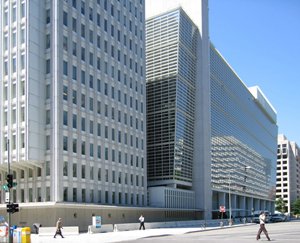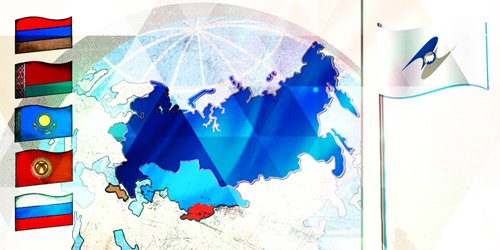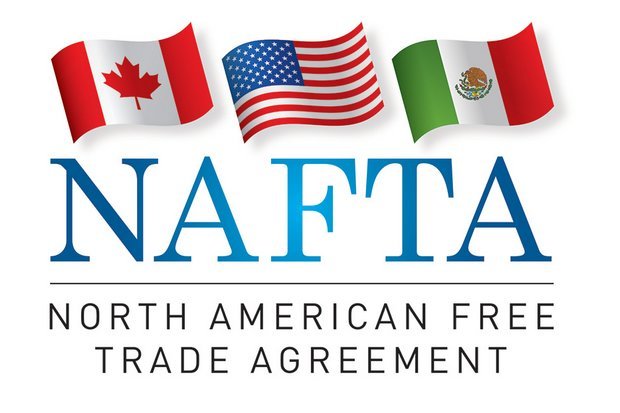RESEARCH PAPER “Evaluating the effectiveness of the World Bank”
18-fev, 11:21 171 Gündəm / Dünya
KHAYAL HUSEINOV
Azerbaijan State University of Economics/ International School of Economics/ World Economy
Ganja/Azerbaijan
2021
Abstract
This paper analyzes and explore success factors of World Bank project and specifically the relationship between critical success factors (CSFs) and project success as perceived by World Bank Task Team Leaders (project supervisors). The exploratory factor analysis highlights a specific set of five CSFs: monitoring, coordination, design, training, and institutional environment. The regression analysis shows that there is a statistically significant and positive relationship between each of the five CSFs and project success. Consistent with theory and practice, the most prominent CSFs for project supervisors are design and monitoring. The findings contribute to the project CSF literature by conceptualizing project supervision as a multidimensional construct and by confirming supervision as a generic CSF for World Bank projects. The World Bank project supervisors and managers should strengthen project design and monitoring and thus improve project implementation as well as the chances for project success.
Introduction
The World Bank is an international financial institution that provides loans and grants to the governments of low- and middle-income countries for the purpose of pursuing capital projects. It comprises two institutions: the International Bank for Reconstruction and Development (IBRD), and the International Development Association (IDA). The World Bank was created at the 1944 Bretton Woods Conference, along with the International Monetary Fund (IMF). The intention behind the founding of the World Bank was to provide temporary loans to low-income countries that could not obtain loans commercially. The Bank may also make loans and demand policy reforms from recipients. Projects remain the instruments of choice for policy makers in international development. Yet, paradoxically, the poor performance of projects and the disappointment of project stakeholders and beneficiaries seem to have become the rule and not the exception in contemporary reality. Dissatisfaction with project results and performance dates back to the 1950s. The project failure rate at the World Bank was over 50% in Africa until 2000 The World Bank's private arm, the International Finance Corporation has discovered that only half of its African projects succeed. In an independent rating, the Independent Evaluation Group (IEG) claimed that 39% of World Bank projects were unsuccessful in 2010. World Bank projects all too frequently fail to achieve their goals due to a number of problems that could be termed “managerial” and “organizational” imperfect project design, poor stakeholder management, delays between project identification and start-up, delays during project implementation, cost overruns, coordination failure, etc.
Why is the World Bank is considered to be an Effective Organization?
In order to understand the effectiveness of the World Bank we have to look at how successful the organization is about achieving its objectives and implementing its projects. They consider the global lending institution to have a great number of successes that improved the livelihoods and wellbeing of millions of people around the world. Supporters of the World Bank, thinks that World Bank has been able to go along with all of its main priorities. Between 2000 and today, the World Bank has successfully undertaken projects in health, education, and financial sectors. Health projects include fighting TB, food crises responses, and recovering from natural disasters. Education projects approach it as not only a necessity for economic growth and development, but also a moral imperative and human right. 2010 marked a record high of financing education projects at $5 billion. $5 billion accomplished training for 3 million teachers and renovating/building 2 million classrooms all affecting an improved education for 105 million children.
The moral of the story: raising the living standards of the world’s poor is a multifaceted and difficult task. The World Bank has had a mixed record of getting successful results. However, their institutional framework is extremely valuable and their experience of both successes and failures is invaluable.
Even if we talk about the various developments brought the Millennium Development Goals targets within reach in some cases, we could observe that for the goals to be realized, five criteria must be met:
• stronger and more inclusive growth in fragile states
• more effort in health and education
• integration of the development and environment agendas
• more as well as better aid, movement on trade negotiations
• stronger and more focused support from multilateral institutions like the World Bank
However, World Bank projects are very specific because of their unique environment. They are characterized by a rare complexity, the high delicacy and the relative intangibility of their ultimate objective of poverty reduction. Meaning that sometimes they can cover only one specific area leaving others intangible.
World Bank project supervision
The World Bank undertakes international development projects in most developing countries but does not implement projects itself. Instead it relies on partners on the ground and the title of Project Manager does not apply to the World Bank. The cycle of each project consists of different phases. Projects go from the preparation phase, through the implementation phase, and to the evaluation phase. In the preparation phase, agreement is reached with the recipient government on both the content and design of the project. Once approved by the World Bank's Board, the project enters its implementation phase, undertaken by the government or more specifically the national project coordinator. The implementation phase is broken down into different phases as determined by the preparation phase. The project is financed in parts provided by the World Bank. Each part is released, aborted, or scaled down by World Bank management depending on the conclusions of the supervision report designed to inform the management review. Therefore, two key participants are involved in projects funded by the World Bank: the World Bank project supervisor (Task Manager or Task Team Leader) – who supervises project implementation and ensures the agency's guidelines are strictly followed by the national Project Management unit – and the national project coordinator, the head of the national Project Management unit, who is considered the true project manager, i.e. the one in charge of project operations. World Bank project supervisors are not involved in day-to-day IDPM, although they are updated on each step of the project and may not grant a “no objection” to the national project coordinator when he proceeds with important transactions, such as terms of reference, short lists, contract awards, etc. The World Bank project supervisor could reject the national project coordinator's request but such a decision is not made without good reason. Note that a rejection means that the project team has strayed too far from the guidelines or that the project management includes a poorly planned activity or simply does not conform to the project plan. Task Team Leaders supervise at least four or five projects at the same time generally in the same field, but not necessarily in the same country. Once completed or aborted, the project is evaluated by an independent institution, the Independent Evaluation Group, after 2 years. The Independent Evaluation Group database provides information on project success (relevance, efficiency, and effectiveness) and on project characteristics (fields, investment project or not, quality of the World Bank's supervision efforts and the recipient government's preparation efforts). Not surprisingly, this database has been used to study World Bank project success.
Why is the World Bank considered to be an Ineffective Organization?
Critics of the World Bank argue that structural adjustment loans are a mechanism of forcing free market economics on countries through coercion. Countries with a debt crisis, whatever their other characteristics, agree to the bank's package of legal and economic reforms, and the bank agrees to lend them money.
The World Bank claims that its major goal is to promote global development through poverty reduction, but there are many critics who argue this is a smoke-screen, and the real aim of the World Bank is to use conditional loans in exchange for countries establishing neoliberal economic policies which ultimately benefit western companies and financial institutions.
Ha-Joon Chang (2007) for example argues that the World Bank present themselves as a ‘good Samaritans’ whose only motives are to assist the developing world, but they are actually ‘bad Samaritans’ because their motives are essentially selfish.
Chang argues that the real point of the World Bank (along with IMF and the WTO) is to create a policy environment in the developing world that is friendly to Transnational Corporations, an environment which benefits TNCs and small groups of elites in developing countries, but results in deteriorating social development for the majority of the people. So, it means that their main goal is not really to make worse better, but to gain economic benefit.
Case study: Ineffective Program of World Bank in Bolivia
In this section, I will demonstrate the harmful effects World Bank policies that can have on poor countries in the case of the World Bank’s Structural Adjustment Program in Bolivia in the mid 1990s. In 1994 the World Bank refused a $25 million dollar loan to a local water co-operative in Cochabamba, Bolivia. Instead, they insisted that the Bolivian government hand over the running of the local water supply to a French multinational named Bechtel. The agreement that the World Bank forced onto the Bolivian government gave the French company total control over the local water supply in Cochabamba, even over the rain water, and locals were forbidden from collecting rain water to drink – they either had to pay the company for water or die of thirst.
The problem was that the fees Bechtel was charging for water cost the average local resident more than they spent on food, or about half of their income (the other half they didn’t spend on food).
In response, a resistance movement sprang up (no pun intended), to which the government responded with military force – and over a hundred people were wounded in the following skirmishes.
In this case, the government eventually backed down, and the water supply was returned to the control of the local community, meaning that water was again effectively available for free, but this goes to show the lengths the world bank will go to in support of Transnational Corporations.
Evaluating the Effectiveness of the World Bank
We can summarize some of the harms that World Bank structural adjustment programs have done in Africa, for example. To summarize just a few of them:
• Privatization has meant that Transnational Corporations have been able to buy state enterprises at very low costs.
• Tax reforms under structural adjustment programs typically have meant tax cuts for the wealthy (lowering taxes on profits for example) and shifted the tax burden onto middle and low-income groups.
• Deregulation has made it easier for TNCs to shift their profits abroad – to offshore banking accounts for example.
• Cuts to public services such as health have increased the number of people without access to health care.
• Cuts in public sector employment, have led to large increases in unemployment. (for example 300 000 civil servants were retrenched in Zaire – now DRC – in 1995).
• Various NGOs funded by international aid agencies have gradually taken over government functions in the social sector.
Evaluations of these Criticisms are given below:
Firstly, many of these criticisms are historical, and they may not apply to World Bank policy today.
And secondly, it’s actually quite difficult to evaluate how successful World Bank policies have been in promoting development, because you can never be sure what would have happened if World Bank policies and conditional loans had not been put in place, and it’s difficult to isolate the specific effects of policies given the open-systems nature of global development.
The World Bank claims that its major goal is to promote global development through poverty reduction, but there are many critics who argue this is a smoke-screen, and the real aim of the World Bank is to use conditional loans in exchange for countries establishing neoliberal economic policies which ultimately benefit western companies and financial institutions.
Conclusion.
To sum up, I think that World Bank has been achieved its objectives, however it had some drawbacks in time of implementing it. So that, an extensive academic literature, with which the Bank rarely engage, challenges the robustness of the theoretical and evidence bases for World Bank’s principles and policies. Volumes of documents testify to the experiences of millions of people negatively impacted by World Bank policies and programs. Together they suggest that Bank’s policies have failed to achieve their stated objectives and instead support an economic order that benefits elites and private sector interests at the expense of poor and marginalized communities.
References.
1. https://projects.worldbank.org/en/projects-operations/projects-summary?sectorcode_exact=EW
2. Chicago Booth Review - Is the WORLD BANK a failure or a success?
3. https://projects.worldbank.org/en/projects-operations/project-detail/P006580
4. World Bank – Poverty
6. https://revisesociology.com/2017/02/14/criticisms-of-the-world-bank/
7. https://projects.worldbank.org/en/projects-operations/projects-summary?sectorcode_exact=EWAtlantic
Council - What is wrong with the WORLD BANK?
9. https://projects.worldbank.org/en/projects-operations/project-sector
10. https://ieg.worldbankgroup.org/sites/default/files/Data/reports/WorldBankEvaluationPrinciples.












